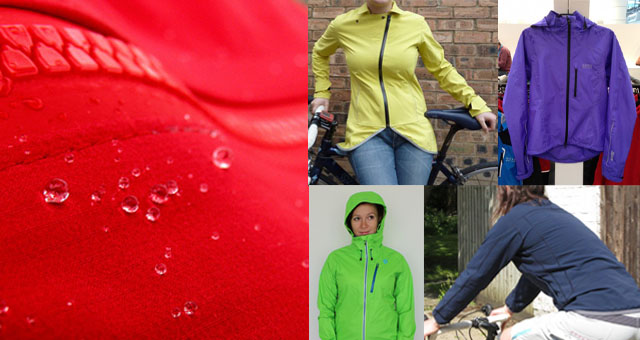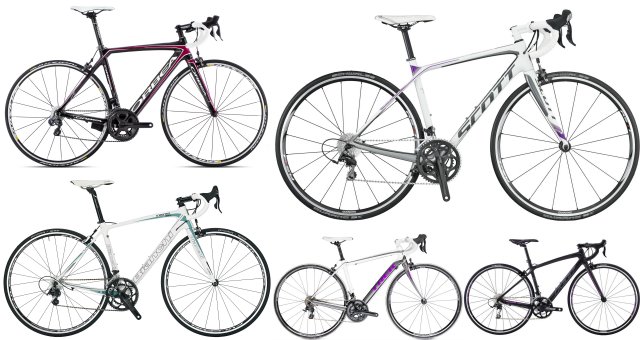Bev Blakeman has been a part of the bike industry for a few years, she was the first female store manager at Evans Cycles and until recently managed a cycling cafe.
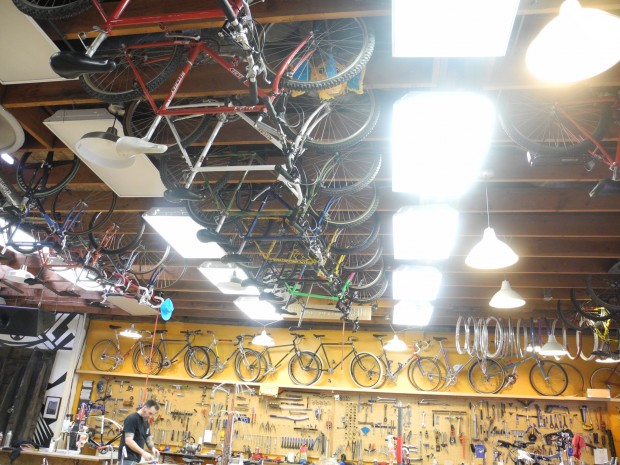
Bev understands that if you’re new to cycling, visiting a bike shop can be a bit of a daunting experience with so many choices and so many strange looking accessories. She wanted to share with our readers a selection – but by no means all – of the questions that she used to be asked most frequently while working in a bike shop.
1. Do I need padded shorts?
If you’re going to be on a bike for any length of time then definitely. Padded shorts with their comfortable chamois make a world of difference. They don’t have to be out and out Lycra stealth either, a number of manufacturers offer padded undershorts that are worn beneath your trousers instead of underwear.
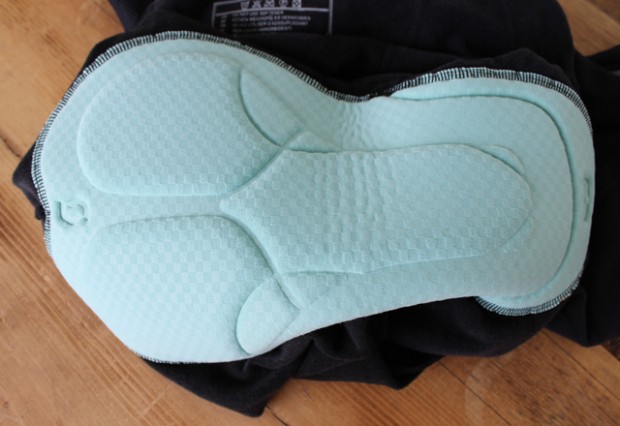
Try a couple of different pairs on too, as the pad can vary from short to short. They will feel a little cumbersome the first time you try them but they won’t look anywhere near as bad as you imagine, and once you are used to them you will wonder how you did without them!
2. How do I know which size bike to buy?
Manufacturers guidelines will help give a rough idea and your local bike shop should be able to help further but there are a few general rules of thumb that can be used to point you in the right direction.
Bikes with a number (e.g. 47cm or 15 inches) tend to be based on the length of the seat tube, whereas bikes marked S, M and L take a top tube measurement into account also.
There should ideally be a minimum of 100mm of seat post showing when your saddle is set. That is, when the crank is in-line with the seat post (at twenty five to the hour if you imagine it as a clock arm), your leg should be almost fully extended when you put your heel on the pedal. The length or reach of the bike should be such that your lower back is flat and stable with no excessive spine curvature. Always have a test ride at the store and where possible have a bike fit afterwards.
3. Why’s everything pink?
I used to hear this a couple of times a week without fail, along with;
Who designed that? It had to be a man!
Granted there are a lot of us that embrace pink – I’ve finally begun to in my late 30’s – but the girly colours, flowers and swirls are not everyone’s cup of tea. Fortunately, with our numbers growing vastly, manufacturers are starting to realise that we have our own identity and don’t necessarily want to be pigeon-holed.
There is still a lot of pink about, but if you look a little bit harder there is now a lot of fantastic kit that isn’t! Brands have come a long way, offering technical kit along with clothing that looks great on and off the bike.
4. Do I need any accessories with my bike?
Apart from a helmet, which we’ll come onto later, it’s definitely worth buying a saddle bag to carry a spare inner tube and some tyre levers. You’ll also need a pump. It’s not worth leaving home without these things, if they’re in a little saddle bag that stays on your bike you’re always covered if you get a puncture.
It’s also good to do a basic maintenance course that covers things like changing an inner tube and indexing gears, it will give you confidence to get out on your bike on your own knowing you can deal with the basics.
Evans Cycles run regular FixIt! courses in their stores around the vast majority of the country for £15. You receive tuition along with a manual and a goody bag to take home with you.
5. Do I really need a helmet?
In short, yes, it is recommended you do wear one! They aren’t compulsory but for any serious riding a helmet is a must. Design has come a long way and they are much more comfortable and a lot less bulky than previously so there’s not really an excuse not to wear one.
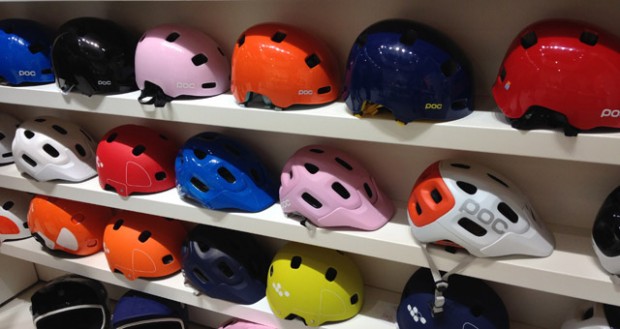
Women’s helmets are available but the only major difference between this and a men’s helmet is the colour. Try a few different brands on as some will feel much more comfortable than others.
6. Will my bike fit in the car okay?
I’ve seen someone get two bicycles and a turbo trainer out of a Fiat 500, so the answer is most likely yes. You may have to put your rear seats down and take off the bike’s front wheel but the majority of bikes will go into a car no problem.
A lot of bikes now have quick release skewers making it a two minute job to take your front wheel out. If you’re not sure how, the store you buy your bike from should be happy to show you. Just remember to fasten your brakes back up when you put the wheel back in. If you have V-brakes and to avoid squeezing the brake lever when lifting the bike in and if you have disc brakes as it can pop the pad out of the seal.
7. I’d quite like some clipless pedals but I’m a bit scared
You’re not alone! The thought of being attached by your feet to a moving object that can suddenly come to a halt, fills a lot of people with horror – both male and female. Clipless pedals are easy to master and once you’ve realised how efficient they are you’ll wonder how you ever managed without. SPD’s are a good place to start because they are double sided and you can also adjust the spring tension in the pedal making it easier to clip in and out.
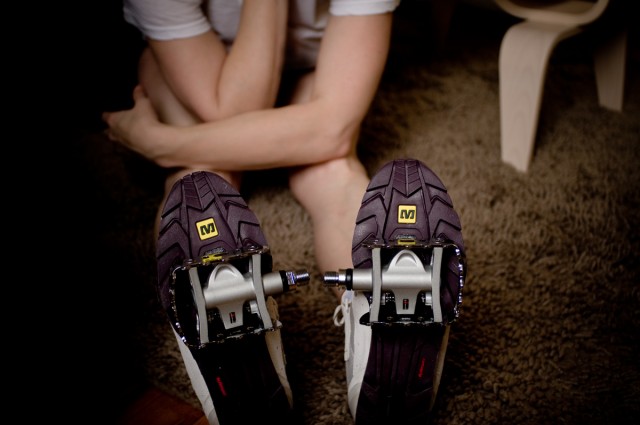
The shoes used are often designed with the cleat to be recessed into the sole so they are still comfortable to walk in but have a much stiffer sole than a trainer or normal shoe. Before you go out for your first ride sit in the doorway or lean against a fence and practice clipping in and out one foot at a time, remembering to twist out at the heel without pulling up – you’ll naturally develop a preference of which foot you clip out first and put down at junctions.
For more information read our article on how to master clipless pedals.
8. Can I transport my children safely on my bike?
Bike seats are suitable for children aged around 9 months and upwards. Rear fitting seats attach via brackets to go around the seat post, for example the Hamax Sleepy and Siesta or via a rack like those used for panniers, such as the Co-pilot Taxi and Limo. If you have more than one child to carry then a trailer may be the best option, these again attach via the seat post. Remember to check the manufacturer’s guidelines for weight limits.
9. Are there any local clubs or groups I can ride with?
Certainly! Most cyclists in your local store should be able to point you in the right direction. Gone are the days of cycling clubs being made up solely of wiry old roadies heading out for 100 milers with jam sandwiches in their back pocket.
A club in the north east now has a Saturday and Sunday morning WAGS ride as well as a TOG’s (The Old Gits) ride. The British Cycling website also has a search feature to help you find clubs in your area or if you just want social rides then Breeze ladies rides and local Sky Rides are excellent events to go to.
Remember when you’re in a store if you have a question, ask away, that’s what the staff are there for. They’re most likely cyclists themselves and at some point were a beginner just like you. Plus there’s probably no question they haven’t already heard!
Bev came to cycling from a running background via adventure racing. She competes in cyclo cross in winter and rides against the clock in time trials in summer, but, like any cyclist she’s also partial to a nice long Sunday ride with a good cafe stop.
You can find Bev on Twitter @bevb74

